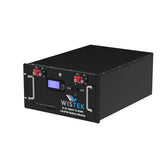Calculating Amperage and Power for 3000 Watts at 220 Volts
Understanding how to calculate amperage and power is crucial for various electrical applications whether you are an electrician working on home systems or a consumer looking to understand your device's power consumption. In this article we will discuss how to calculate amperage from 3000 watts at 220 volts providing you with a step-by-step guide that ensures you grasp the basic principles behind electrical calculations. The purpose of this blog post is to help you understand amperage and power in a simple and efficient manner.
- What Is Amperage and Why Is It Important?
- Calculating Amperage for 3000 Watts at 220 Volts
- How to Calculate Power Based on Amperage
- The Role of Voltage in Amperage Calculation
- Why Amperage Matters in Electrical Systems
- Understanding Amperage and Power in Everyday Applications
What Is Amperage and Why Is It Important?
Amperage refers to the flow of electric current within a circuit. It is measured in amperes, often abbreviated as amps. The amperage determines how much electrical charge is moving through a conductor at any given time. The calculation of amperage is crucial when planning electrical systems, as it allows you to choose the appropriate wires, fuses, and circuit breakers that can handle the current without risking overloads or damage.
Understanding amperage and power is especially important when working with large electrical devices or appliances. If you are trying to figure out the power usage of a 3000-watt device at 220 volts you need to know how to calculate the amperage for that device.
How Amperage Relates to Power
The relationship between amperage and power is governed by basic electrical formulas. To calculate power in watts, you use the formula:
P=I×VP = I \times V
Where:
- PP is power (in watts)
- II is amperage (in amps)
- VV is voltage (in volts)
This formula tells us that the power consumed by a device is the product of the current flowing through it (in amps) and the voltage applied to it (in volts).
>>See also Which Solar Panel Kit Is Best For You 200W 600W Or 800W
Calculating Amperage for 3000 Watts at 220 Volts
Now that you understand the relationship between amperage and power, let’s dive into calculating the amperage for a device using 3000 watts at 220 volts. Using the formula above we can solve for the amperage (I).
Rearranging the formula to solve for amperage we get:
I=PVI = \frac{P}{V}
Substitute the given values:
I=3000220=13.64 ampsI = \frac{3000}{220} = 13.64 \, \text{amps}
So, a device that consumes 3000 watts of power at 220 volts draws approximately 13.64 amps. This means that the current flowing through the device is 13.64 amps.
Factors Affecting Amperage
While the basic calculation for amperage is straightforward there are a few factors that can affect the actual amperage needed for a device. These factors include the efficiency of the device, the power factor, and other electrical losses that may occur in the circuit. In real-world applications you might need to consider these variables when selecting the appropriate components for your electrical system.
How to Calculate Power Based on Amperage
While this article focuses on calculating amperage, it is often useful to reverse the process and calculate power based on known amperage and voltage. The formula we mentioned earlier can be rearranged to calculate power as follows:
P=I×VP = I \times V
This formula allows you to determine the power consumed by an electrical device when you know the amperage and the voltage.
For instance, if you have a device drawing 10 amps at 220 volts you can calculate the power consumption:
P=10×220=2200 wattsP = 10 \times 220 = 2200 \, \text{watts}
This means the device is consuming 2200 watts of power.
The Role of Voltage in Amperage Calculation
Voltage is another crucial factor in amperage calculations. As we saw in the above example, the amount of current (amperage) needed to run a device depends on the voltage provided. When the voltage increases, the amperage decreases for the same power consumption. Conversely, when voltage is lower, the amperage required increases.
For example, if you were to calculate the amperage for a 3000-watt device at 110 volts the amperage would be much higher than at 220 volts. This shows why understanding voltage and amperage is essential when designing electrical systems to ensure safety and efficiency.
Why Amperage Matters in Electrical Systems
Knowing the amperage of your devices is essential for designing safe and effective electrical systems. Choosing the correct wire size, circuit breaker rating, and fuse protection all depend on knowing the amount of current that will flow through the system.
Overloading and Electrical Safety
One of the main dangers of miscalculating amperage is the risk of overloading circuits. If the amperage exceeds the capacity of the wiring or circuit protection, it can lead to overheating, electrical fires, or even permanent damage to your devices. This is why it is essential to properly calculate amperage and ensure that your electrical system is equipped to handle the load.
>>See also Reasons Your Black And Decker 36V Lithium Battery Charger Is Flashing Red
Understanding Amperage and Power in Everyday Applications
Now that you know how to calculate amperage let’s look at some common real-world applications where this knowledge is used. Many household appliances and industrial machines operate at different power ratings and voltage levels. By calculating the amperage, you can determine whether your electrical setup can safely handle these devices.
For instance, most household air conditioners consume a significant amount of power. A typical unit might consume 3000 watts or more at 220 volts. By calculating the amperage you can ensure that your circuit can handle the load without the risk of tripping breakers or causing damage to the wiring.
Amperage in Household Wiring
For household wiring, understanding the amperage is essential when deciding what size wires to use for electrical circuits. Standard wiring systems are often designed to handle certain amperages such as 15 amps or 20 amps for general lighting and small appliances. If you attempt to use a device that exceeds these amperage limits on a circuit with insufficient capacity it could lead to an overload. This makes it crucial to always check your device’s amperage requirements and ensure they match the capacity of your home’s wiring system.
In conclusion, understanding amperage and power is vital for anyone working with electrical systems whether in residential or industrial settings. By calculating amperage for a 3000-watt device at 220 volts, we found that the amperage is approximately 13.64 amps. This calculation provides crucial insight into how much current is required to operate such a device safely and efficiently. Always be mindful of amperage ratings to ensure electrical safety and prevent overloading circuits.
As we’ve seen, amperage plays a critical role in the operation of electrical systems, and it is essential to understand how to calculate it properly. Whether you are an electrician, an engineer, or just a homeowner looking to ensure the safety and efficiency of your electrical appliances knowing how to calculate amperage and power is essential for maintaining a functional and safe electrical environment.
To wrap it up amperage is a key concept in electrical calculations and understanding its relationship with power is essential for anyone working with or designing electrical systems. By calculating amperage for 3000 watts at 220 volts you can ensure that your systems are adequately designed and safe to use.



















Leave a comment
All blog comments are checked prior to publishing